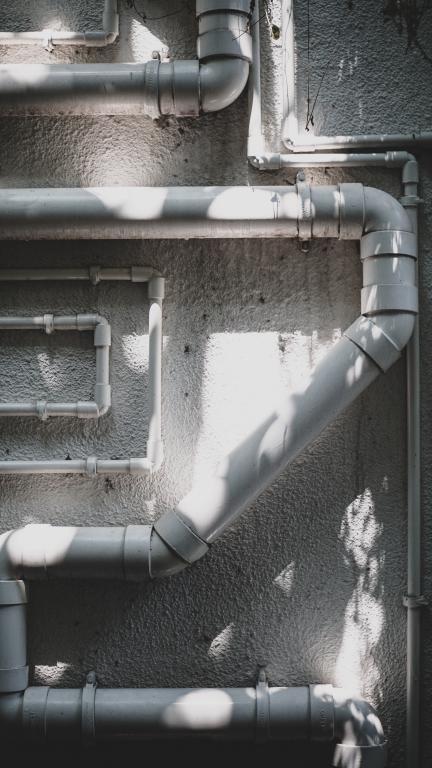
Details
Solution type
This case study is part of a project catalogue produced by ReUseHeat to inspire how to utilize excess heat from urban sources for heating and cooling purposes. The catalogue contains 25 existing or planned projects, 12 of which are Danish and 13 from other European countries.
Facts about the case |
|
| Installed heat capacity: 1600 kW Heat source: Low temperature industrial waste water (22-25°C) Heat pump COP: 4.6 Production: 6500 MWh per year |
Investment cost: €1.8 M (grants of €320,000) Payback period: 7 years Period: Finished in March 2017 District heating network:600 consumers |
Description
In 2016, the district heating company Rødkærsbro Fjernvarmeværk established two transmission pipelines, connecting the nearby Arla dairy with the district heating network. The transmission system enables heat transfer from a newly installed biogas engine at Arla and transmission of hot waste water to a heat pump at the district heating plant. Through the transmission pipelines, Rødkærsbro Fjernvarmeværk receives excess heat from industrial processes at the dairy.
The main purpose of utilizing excess heating from the local industry was to replace the former natural gas-based production units. By doing so, economic and environmental benefits are obtained due to lowered heating costs, reduced fossil fuel consumption, and reduced carbon emissions. The wastewater from the dairy processes is low-temperature and was previously discharged into a nearby stream, but it holds a large energy potential with temperatures between 22 and 25 degrees Celsius. A 1.6 MW heat pump utilises the hot waste water and cools it to approximately 5 degrees Celsius before it is discharged into the stream. This further derives positive environmental benefits.
Rødkærsbro Fjernvarmeværk has approximately 600 consumers and an annual heat production of 15,000 MWh. Of this, approximately 6500 MWh is delivered as baseload from the biogas engine, due to it being the cheapest heating production unit in the system. Another 6500 MWh is delivered from the wastewater heat pump, while the remaining 2000 MWh is primarily bought from a small biogas plant. The heat pump is constructed as two serially connected heat pump units. District heating water is heated from 38 to 52 degrees Celsius in the first heat pump and increased to 70 degrees Celsius in the second heat pump. At the diary, a heat exchanger cools the industrial wastewater through an intermediate circuit before the wastewater is transferred 1800 m to Rødkærsbro Fjermvarmeværk. The temperatures delivered to the heat pump are approximately 20 degrees Celsius, and the return to the heat exchanger at Arla is approximately 3 degrees Celsius. Wastewater temperatures are constant throughout the year, enabling an annual COP of 4.6.
Heat pump operation began in March 2017, and the unit has been running without major challenges. The wastewater utilization displaces great amounts of natural gas-based heat production and reduces the CO2 emissions by approximately 1000 tons of CO2 annually. The heat pump can produce between 40 and 45% of the total heating demand in Rødkærsbro. The total investment was € 1.8 M of which the project received a grant from the Danish Energy Agency of € 320,000. The simple payback period is expected to be 7 years.
Rødkærsbro, Denmark
ReUseHeat, Finished in March 2017, IVL Swedish Environmental Research Institute
Names of stakeholders
Vagn Rasmussen, Rødkærsbro Fjernvarme
External links:
Rødkærsbro Fjernvarmeværk, Arla DK, Planenergi, Handbook – 25 cases of urban waste heat recovery
Replicability |
Low |
Medium |
High |
|---|---|---|---|
| Authorizative easiness | x | ||
| Adaptability to different climate conditions | x | ||
| Technology easy-to-implement (No need for specific technical requirements) | x | ||
| Easy-to-implement (No need for specific technical requirements) | x | ||
| Easy-to-operate (No need for specific technical requirements) | x | ||
| Opportunity of integrating waste energy sources | x | ||
| CAPEX needed for the deployment of the solution | x |
